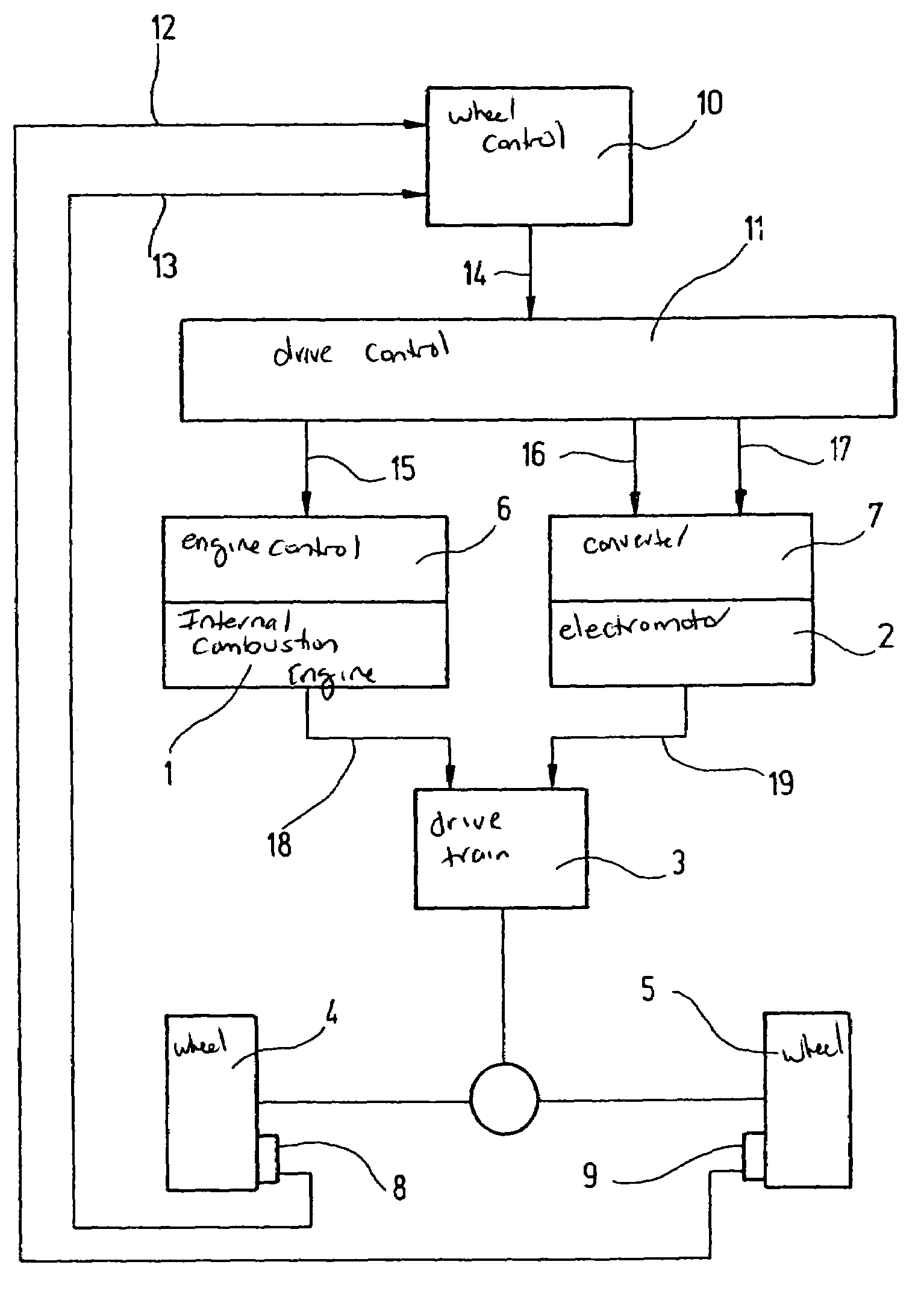Method and device for regulating the drive torque following a load change in hybrid vehicles
a technology of hybrid vehicles and drive torque, which is applied in hybrid vehicles, tractors, instruments, etc., can solve the problems of reduced cornering stability of motor vehicles, motor vehicles become unstable, driven wheels exhibit brake slippage, etc., and achieve lateral stability, increase the effect of driving torque and retaining stability
- Summary
- Abstract
- Description
- Claims
- Application Information
AI Technical Summary
Benefits of technology
Problems solved by technology
Method used
Image
Examples
Embodiment Construction
[0016]In the block diagram shown in the FIGURE, a hybrid vehicle having 2-wheel drive is assumed, in which an electromotor 2 is provided in addition to internal combustion engine 1. Via a transmission, internal combustion engine 1 as well as electromotor 2 are in operative connection with driven wheels 4, 5 of the hybrid vehicle. An engine control 6 is assigned to internal combustion engine 1, and a converter 7 to electromotor 2. Internal combustion engine 1 introduces a torque MVM (signal 18) and electromotor 2 introduces a torque MEM (signal 19) into the drive train.
[0017]In order to be able to increase the drive torque in these hybrid vehicles as quickly as possible when driven wheels 4, 5 exhibit brake slip in response to a load change, that is, in order to retain the lateral stability in a load change of the hybrid vehicle so that the hybrid vehicle retains its stability during driving even when brake slip occurs at driven wheels 4, 5 due to a load change, the drive torque is a...
PUM
 Login to View More
Login to View More Abstract
Description
Claims
Application Information
 Login to View More
Login to View More - R&D
- Intellectual Property
- Life Sciences
- Materials
- Tech Scout
- Unparalleled Data Quality
- Higher Quality Content
- 60% Fewer Hallucinations
Browse by: Latest US Patents, China's latest patents, Technical Efficacy Thesaurus, Application Domain, Technology Topic, Popular Technical Reports.
© 2025 PatSnap. All rights reserved.Legal|Privacy policy|Modern Slavery Act Transparency Statement|Sitemap|About US| Contact US: help@patsnap.com


